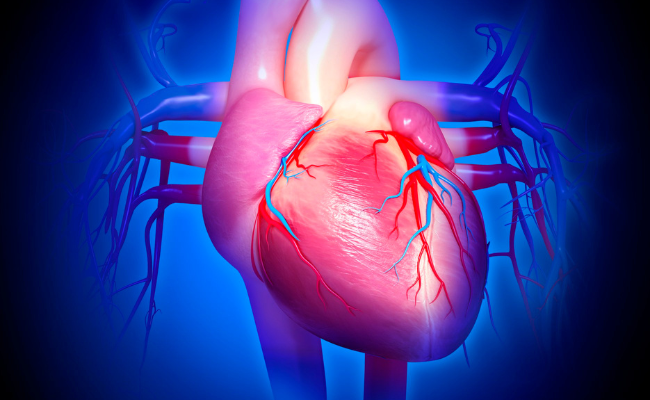How to Treat Pulmonary Hypertension?
- January 06, 2024
- No Comments

What is Pulmonary Hypertension?
Pulmonary Hypertension (PH) is a condition marked by high blood pressure in the pulmonary arteries, responsible for carrying oxygen-poor blood from the heart to the lungs. This disruption in blood flow poses significant risks to cardiovascular health. While often linked to heart or lung diseases, PH can result from various factors, including different diseases and environmental influences. The condition's inherent danger lies in the increased pressure narrowing the pulmonary arteries, compelling the heart to work harder. Without intervention, this can lead to long-term heart damage and systemic complications, making PH potentially fatal. In essence, Pulmonary Hypertension is a complex cardiovascular disorder that disrupts blood circulation, impacting both heart and lung function.
Why Does Pulmonary Hypertension Occur?
Understanding the causes of pulmonary hypertension involves recognizing its diverse classifications. Group 1, known as pulmonary arterial hypertension (PAH), is often idiopathic or associated with conditions such as connective tissue diseases, congenital heart defects, or exposure to certain drugs and toxins. Other groups include PH due to left heart disease, lung diseases, chronic blood clots, and miscellaneous disorders. The intricate interplay of genetic predispositions and environmental factors contributes to the development of pulmonary hypertension.
The common endpoint across these classifications is the increased pressure in the pulmonary arteries, leading to the symptoms and complications associated with pulmonary hypertension. The progression of the condition can result in the thickening and narrowing of the pulmonary arteries, further exacerbating the challenges in blood flow.
How Does Pulmonary Hypertension Manifest?
The symptoms of pulmonary hypertension can be insidious, often presenting subtly in the early stages, which can lead to delayed diagnosis. Shortness of breath, fatigue, chest pain, and dizziness are common initial symptoms. As the condition advances, individuals may experience an increased heart rate, swelling in the ankles and legs, and fainting. In severe cases, pulmonary hypertension can lead to right-sided heart failure, a life-threatening complication.
The timely recognition of symptoms and diagnostic assessments are crucial for initiating appropriate interventions to prevent the progression of pulmonary hypertension and improve outcomes for affected individuals.
Treatment Solutions for Pulmonary Hypertension
While pulmonary hypertension is a chronic and progressive condition, a range of treatment options is available to manage symptoms, improve the quality of life, and slow the disease's progression. The choice of treatment depends on the underlying cause of pulmonary hypertension and the severity of the condition.
Medications:
- Vasodilators: These include prostacyclin analogs, endothelin receptor antagonists, and phosphodiesterase-5 inhibitors. They work to dilate blood vessels in the lungs, reducing pressure and improving blood flow.
- Anticoagulants: For individuals at risk of blood clots, anticoagulant medications may be prescribed to prevent clot formation, reducing the risk of further complications.
Oxygen Therapy:
Supplemental oxygen is often prescribed to improve oxygen levels in the blood, alleviating symptoms such as shortness of breath and fatigue.
Lifestyle Modifications:
Adopting a healthy lifestyle is essential. Regular exercise, a well-balanced diet, and smoking cessation can contribute to overall well-being and potentially slow the progression of pulmonary hypertension.
Pulmonary Rehabilitation:
Pulmonary rehabilitation programs, including exercise training, education, and support, can improve exercise capacity and enhance the quality of life for individuals with pulmonary hypertension.
Surgery:
In some cases, surgical interventions may be considered. Procedures such as atrial septostomy (creating a hole in the wall between the heart's upper chambers) or lung transplantation may be recommended for advanced cases.
Continuous Monitoring:
Regular follow-up and monitoring are essential components of pulmonary hypertension management. This allows healthcare providers, including a pulmonologist, to assess the response to treatment, adjust medications as needed, and detect any worsening of the condition.
Benefit Points of Pulmonary Hypertension Treatment
- Symptom Relief: Treatment aims to relieve symptoms such as shortness of breath, fatigue, and chest pain, improving the overall quality of life for individuals with pulmonary hypertension.
- Improved Exercise Capacity: Medications and pulmonary rehabilitation can enhance exercise capacity, allowing individuals to engage in daily activities with less difficulty. This contributes to an improved sense of well-being and independence.
- Slowed Disease Progression: By addressing the underlying causes and managing symptoms, treatment can potentially slow the progression of pulmonary hypertension. This is vital for preventing further damage to the pulmonary arteries and reducing the risk of complications.
- Reduced Risk of Complications: Proper management reduces the risk of complications, including right-sided heart failure, which can significantly impact morbidity and mortality. Early and consistent treatment is crucial for minimizing these risks.
- Enhanced Long-Term Outcomes: Early and consistent treatment, coupled with lifestyle modifications, contributes to better long-term outcomes and survival rates for individuals living with pulmonary hypertension. This underscores the importance of ongoing collaboration between healthcare providers and patients.
Comments (0)